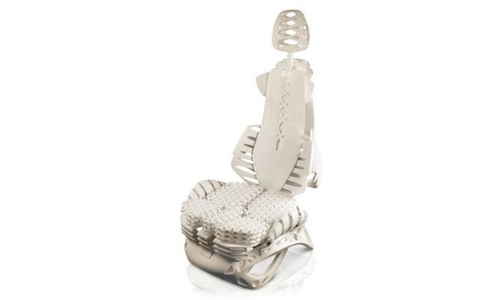
The potential lying within additive manufacturing technology was a well-guarded secret from the mid-80s up until 3D printing patents began to run out around 2014. Upon hitting the mainstream, it’s safe to say that the crowd went wild. The momentum has only continued to grow, with the 3D printing industry expected to increase at a compound annual growth rate (CAGR) of 21% by 2028. Valuable, innovative impacts are being made in nearly every application imaginable, with five main industries continually in the spotlight regarding new strides with advanced 3D printing materials, technology, and complex concepts in design.
Automotive 3D Printing
Automotive is one of the fastest-growing industries harnessing the power of additive manufacturing; however, carmakers and 3D printing go way, way back who have taken great advantage of such technology behind the scenes, far before many others even knew what 3D printing was.
Initially, rapid prototyping was the key element drawing the attention of automotive manufacturers, and still serves as an extremely valuable part of product development. There are still plenty of companies who have yet to institute AM processes for prototyping—but most large, as well as luxury-oriented automotive companies—are not only using AM in product development but also for high-performing, functional products too, both for the interior and exterior.
For car-owners, this means very specific style and comfort inside the car, from headrests to seats, along with other interior features to be 3D printed like dashboard components and gear-shifting devices. Shapeways customers like 67 Designs are famous for their 3D printed mounting systems, allowing tablets to be held in place on the dashboard for filming incredible off-roading adventures.
Shapeways offers advanced materials and technology suitable for automotive 3D printing, to include:
- Nylon 6 Mineral Filled (PA6MF) – PA6MF is used in highly industrial applications due to great strength, stiffness, impact resistance and heat stability. The mineral-filled reinforcements offer properties similar to injection molded parts, 3D printed with Selective Laser Sintering (SLS) technology.
- Nylon 11 [PA11(SLS)] – Available in white, this nylon material is both durable and flexible, making it popular for 3D printing in automotive applications, using SLS technology.
- Nylon 12 [Versatile Plastic] – One of the most popular industrial 3D printing materials overall, Nylon 12 [Versatile Plastic] is used for unlimited prototyping as well as functional parts–including the 67 Designs Magmount.
- Polypropylene – Available in gray, Polypropylene is also a versatile material for automotive parts, offering great resistance to chemicals, low moisture absorption, and excellence in durability. This material is 3D printed with SLS technology.
- Thermoplastic Polyurethane (TPU) – Available in gray, TPU offers superior tensile strength, good load-bearing capacity, and excellent resistance to chemicals, oil and grease, weather, heat, and abrasion. TPU is 3D printed with either SLS technology or Multi Jet Fusion.
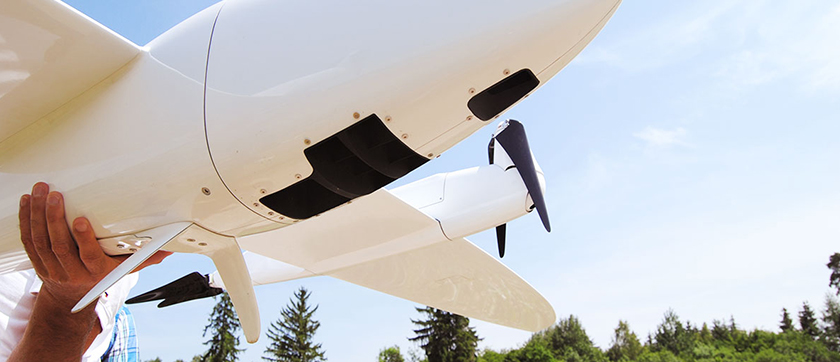
3D Printed Drones
Our urge to fly is a never-ending quest, evidenced by continued innovation in aerospace, as well as drone technology. Although flying may not always be safe for the drone, one great benefit in designing and flying an Unmanned Aerial Vehicle (UAV) is that the human remains firmly planted on terra firma while wielding the controls. Meanwhile, the vast skies continue to become just a little more populated by new drone designs every day.
Aside from the growing potential for consumer deliveries, drones are already in use for industrial tasks, to include use in real estate surveying, as well as for agricultural and crop applications. Drones are used for mapping, as well as search and rescue missions which may include dropoff of supplies when other humans are unable to get to a remote location.
Shapeways offers numerous materials and technologies which are recommended for 3D printing drones, to include the following:
- Aluminum – Materials like aluminum are recommended for high-performance parts required for aircrafts like drones due to incredible strength and durability. Even better, aluminum is lightweight enough to allow sleek drone designs to fly at maximum speeds.
- Multi Jet Fusion Plastic PA12 is a nylon thermoplastic recommended for drones due to its strong and lightweight nature, featuring superior mechanical properties, and good support for intricate structures. MJF Plastic PA12 is available in black or gray, with the option of a smooth and glossy finish.
- Nylon 11 [PA11(SLS)] – Available in white, this nylon material is both durable and flexible, making it popular for industrial applications, 3D printed with SLS technology. This additive manufacturing thermoplastic is particularly appealing to drone designers because of its resistance to impact–definitely an important trait in aerospace technology.
- Nylon 12 [Versatile Plastic] – One of the most popular industrial 3D printing materials overall, Nylon 12 [Versatile Plastic] is used for unlimited prototyping as well as functional drone parts, favored by Shapeways customers like Kespry and Quantum-Systems. This material is also relied on for quality 3D printing of large drone parts. Nylon 12 [Versatile Plastic] boasts the ability to act flexibly for thinner parts and more solidly for thick structures. Available in a wide range of colors for dyeing parts, and a variety of 3D printed finishes, Nylon 12 [Versatile Plastic] is 3D printed with SLS technology.
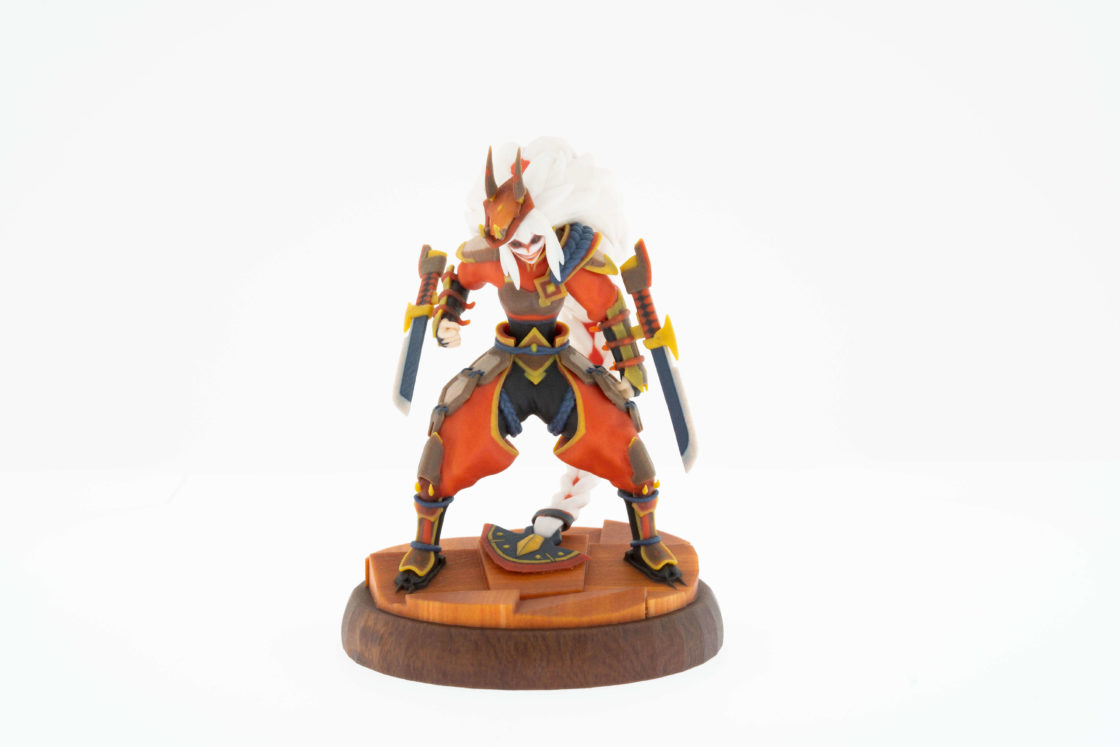
Full-Color 3D Printed Gaming Miniatures
There are hundreds of millions of gaming enthusiasts in the US, and you would be hard pressed to find one who is not already well aware of 3D printing technology and all that it brings to the industry. Recreation like gaming brings in billions of dollars worldwide each year, and is currently still expected to grow at a compound annual growth rate (CAGR) of 13% through 2026.
Tabletop gaming involving role-playing has experienced a resurgence, with more players than ever taking time out to indulge in fantasy worlds filled with adventure, strategy–and full color miniatures for enthusiasts who want to bring their characters to life. Because these 3D printed pieces are often used for many games or expected to last as collectibles, they must be more durable and able to hold their color. Gamers and manufacturers often 3D print custom game pieces, boards, and accessories too.
The following materials are suggested for 3D printed gaming products:
- High Definition Full Color – Available in ten million colors, this material is used to create incredibly detailed figurines for gaming with amazing textures–as well as associated pieces like game pieces, dice, and more. High Definition Full Color is 3D printed with Mimaki technology relying on Binder Jetting.
- Nylon 12 [Versatile Plastic] – One of the most popular industrial 3D printing materials overall, Nylon 12 [Versatile Plastic] is used for prototyping as well as creating final products like miniatures. Available in a wide range of colors for dyeing parts, and a variety of 3D printed finishes, Nylon 12 [Versatile Plastic] is 3D printed with SLS technology.
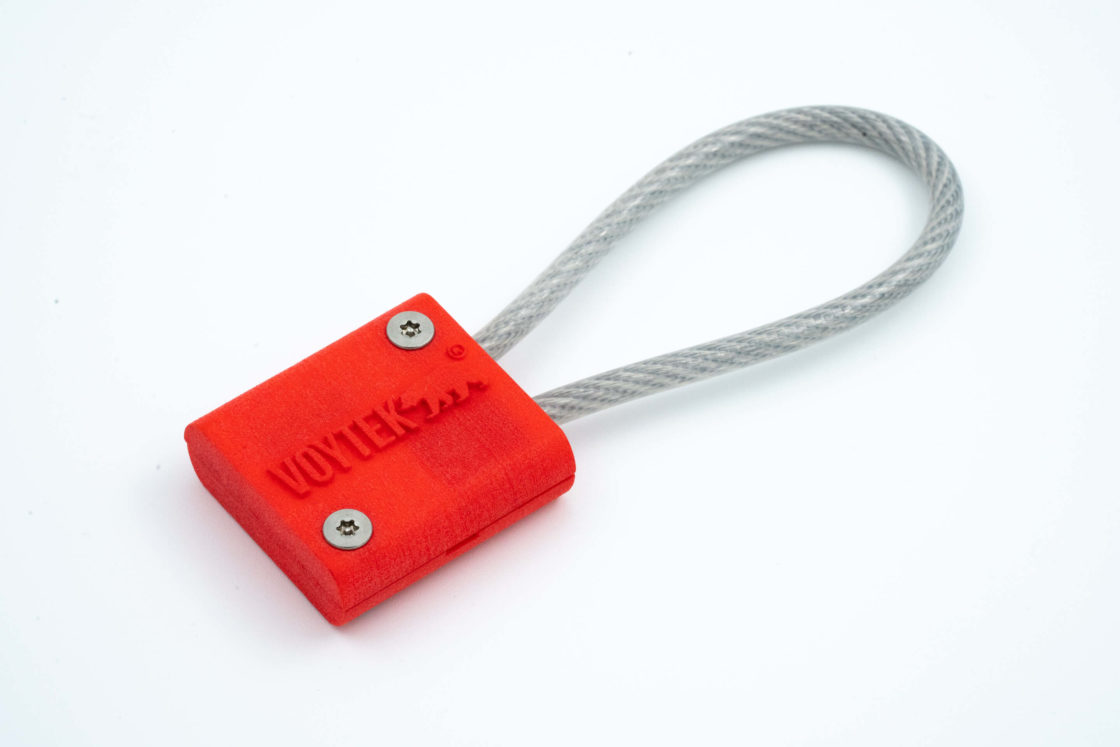
Medical Applications for 3D Printing
3D printing has made tremendous impacts on the medical field, beginning with 3D printed models. With the ability to educate everyone involved in any case, 3D printed models have transformed processes such as diagnosing; for instance, with a CT scan or MRI converted into 3D, a surgeon can get a much deeper perspective on a condition like a brain tumor.
Diagnostics and treatment are much more streamlined, and the anatomically correct, 3D printed medical model can be used as a visual aid for explaining to patients and their families about the condition and any upcoming procedure. Surgical tools and guides can be created too. Again, completely patient-specific treatment is available as medical devices can be customized for the patient and procedure–whether it is a joint replacement or a dental operation.
3D printed prosthetics and orthotics have offered huge benefit to patients around the world in need of limb replacements. With the ability to work quickly from a 3D scan, designs can quickly be engineered to fit growing children, as well as adults who may have never had a 3D printed orthotic or prosthetic that they were proud to wear.
Typical materials recommended for 3D printing in medical applications include:
- High Definition Full Color – Available in ten million colors, this material is used to create incredibly detailed medical models in photo realistic detail. High Definition Full Color is 3D printed with Mimaki technology relying on Binder Jetting.
- Multi Jet Fusion Plastic PA12 – This material is known for excellent mechanical properties, strength and durability, and the stiffness required for 3D printing orthotics, prosthetics and other customized medical products. This material is also lightweight and offers good support and stability for intricate designs. Available in black or gray, Multi Jet Fusion technology is used to 3D print Multi Jet Fusion Plastic PA12.
- Nylon 11 [PA11(SLS)] – Available in white, this nylon is both durable and flexible, making it popular for 3D printing in medical applications, using SLS technology. This 3D printed thermoplastic is particularly appealing because it is biocompatible, durable, and offers excellent impact resistance.
- Nylon 12 [Versatile Plastic] – Extremely popular in medical applications, Nylon 12 [Versatile Plastic] is used extensively for creating models, along with highly customized, functional surgical tools. Nylon 12 [Versatile Plastic] also boasts the ability to act flexibly for thinner parts and more solidly for thick structures. Available in a wide range of colors for dyeing parts, and a variety of 3D printed finishes, Nylon 12 [Versatile Plastic] is 3D printed with SLS technology.
- MJF Plastic PA12 Glass Beads – Commonly used with Multi Jet Fusion technology to 3D print medical devices like braces for the hands, arms, or legs, this material is 40% glass-filled, offering superior accuracy and strength.
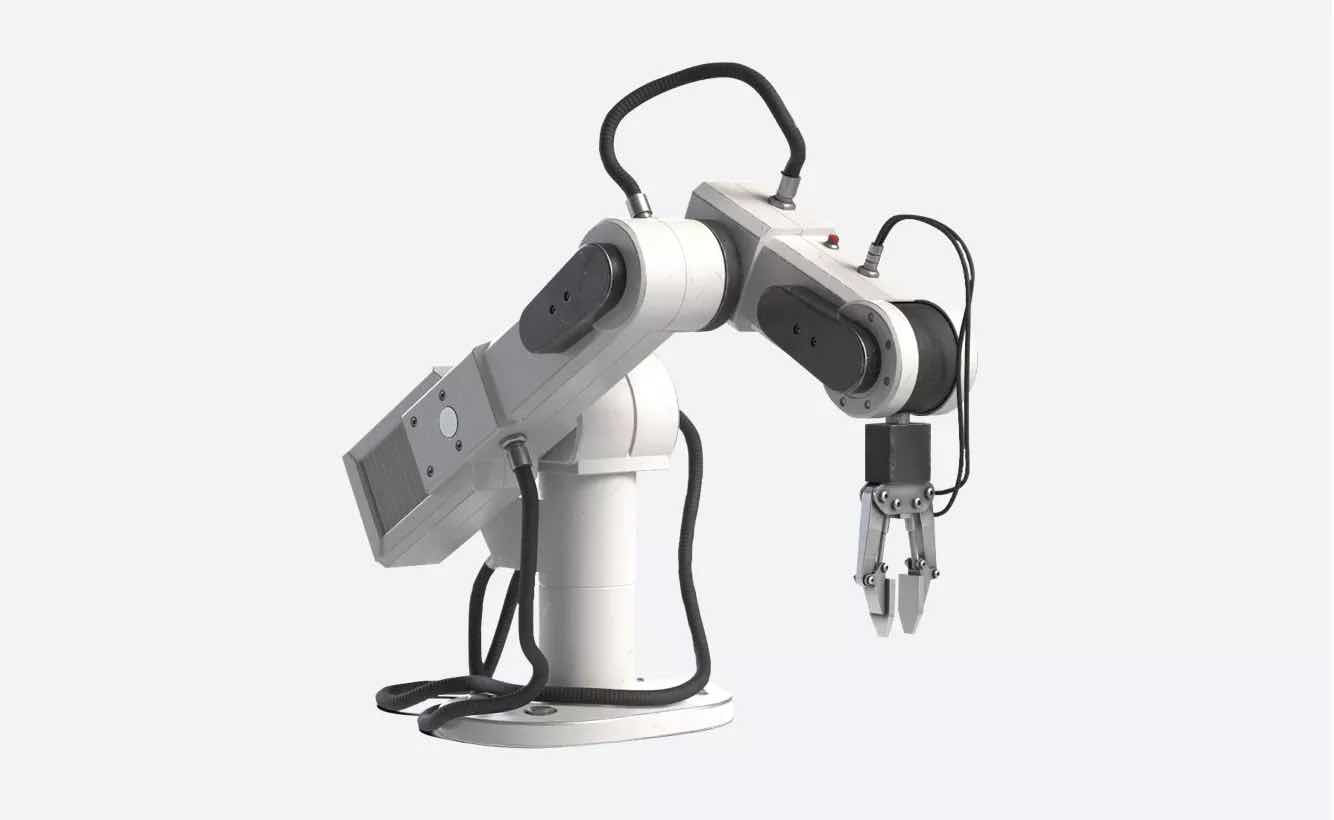
Robotics and 3D Printing
For so long, robotics have been predicted to play a huge role in the future, whether running entire factories, building colonies on the Moon or Mars, As humans have steadily been planning out tomorrow, however, robotics have become very entrenched in the industrial applications of today, and often act as a complementary technology to 3D printing. The technologies have evolved together, with no signs of slowing down.
Within robotics, 3D printing can be used in a number of ways. Initially, prototyping is a huge benefit in robotics. Offering the ability for any designer or engineer to iterate as required, product development is streamlined with models and prototypes produced faster, tested faster, and with valuable feedback given expeditiously. High-performance robots can be created with 3D printing, as well as products like 3D printed robotic hands, arms, legs, and a variety of different bionic items. Electronics can be embedded into 3D printed parts also. Finally, many different types of robotics modifications can be developed, to include housings and parts, tooling and jigs, and replacement components.
Shapeways recommends 3D printing robotics materials like:
- Nylon 6 Mineral Filled (PA6MF) – Available in black, PA6MF is used in 3D printing robotic applications due to great strength, stiffness, impact resistance and heat stability. The mineral-filled reinforcements offer properties similar to injection molded parts, 3D printed with Selective Laser Sintering (SLS) technology.
- Nylon 11 [PA11(SLS)] – Available in white, this nylon material is both durable and flexible, making it popular for robotics applications that are 3D printed with SLS technology.
- Nylon 12 [Versatile Plastic] – One of the most popular industrial 3D printing materials overall, Nylon 12 [Versatile Plastic] is used for unlimited prototyping as well as functional robotic parts–including parts for customers like Flamingo Works, creating incredibly complex and dynamic, 3D printed gamified training models for surgeons.
- Polypropylene – Available in gray, Polypropylene is also a versatile material for robotic parts, offering great resistance to chemicals, low moisture absorption, and excellence in durability. This material is 3D printed with SLS technology.

About Shapeways
Enjoy the benefits of this advanced technology and a wide range of materials from Shapeways for 3D printing your creations with accuracy, complex detail, and no minimum or limits in terms of mass customization or single part orders. Shapeways has worked with over 1 million customers in 160 countries to 3D print over 21 million parts! Read about case studies, find out more about Shapeways additive manufacturing solutions, and get instant quotes here.

